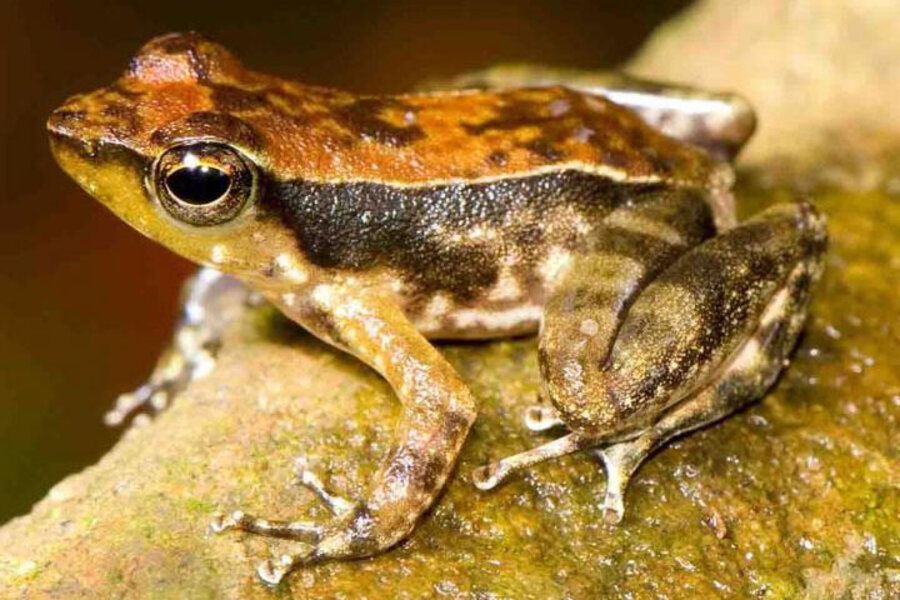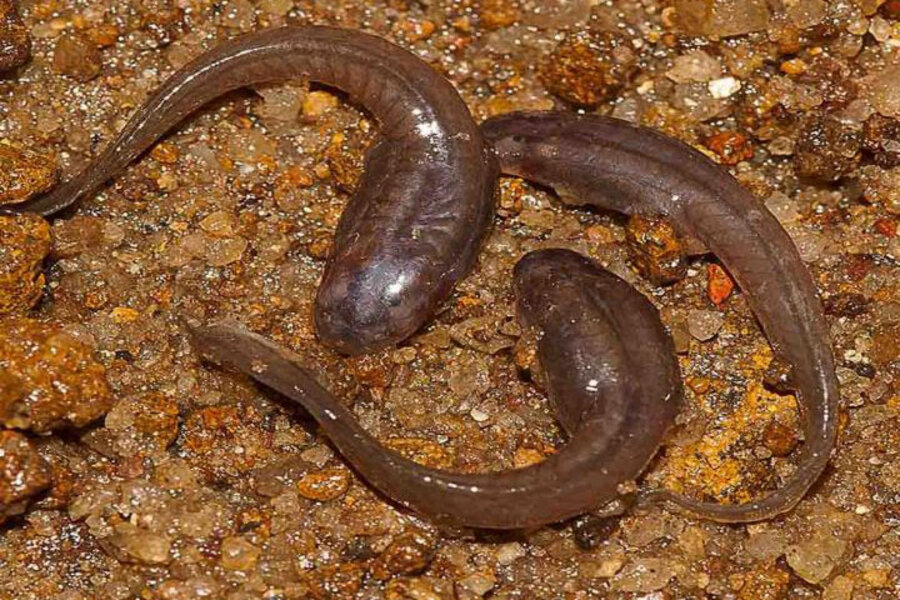India’s dancing frogs spend their tadpole years eating sand
Loading...
Everyone eats a little sand in childhood, and India’s dancing frogs, whose origins have perplexed scientists for 125 years, are no exception.
The discovery of the elusive tadpoles beneath the sandy river bank comes as a welcome surprise to frog researchers, who had never before seen this particular frog's young. Until now, scientists had no idea that the tadpoles had fossorial habits, a term which applies to burrowing creatures like moles.
“These tadpoles probably remained unnoticed all these years because of their fossorial nature, which in itself is a rare occurrence in the amphibian world," S.D. Biju, a co-author from the University of Delhi, said in a press release.
The adult frogs have long fascinated scientists because of their habit of waving their long legs and webbed feet during what scientists call territorial and mating displays, and what more romantic observers describe as a dance.
The tadpoles are not so romantic as their adult counterparts. They have "eel-like" bodies with only a hint of fins, and, for a tadpole, an unusually muscular tail that propels them through the sand and gravel, researchers wrote in a study, published Wednesday in the journal PLOS One. Because they spend their lives burrowing through wet sand, skin covers their eyes and toothless gums lock shut to keep the largest particles out as they move.
As one of a few burrowing amphibians, they still eat a fair amount of sand.
While most tadpoles swim in water, they swim through sand, and they swallow the smaller sand grains and digest whatever nutritious bits come with it, the BBC reported.
"These tadpoles are also interesting because they are very similar to other fossorial tadpoles," amphibian biologist Jodi Rowley of the Australian Museum Research Institute told the BBC. "Clearly there's a particular body shape, etc. that works when you need to 'swim' underground."
They live in the banks of forest streams in India’s Western Ghats, and before this discovery they were the last tadpoles of which nothing was known. Their burrowing habits kept them hidden in this mountainous region of India where biodiversity is uniquely rich and rare. Once they knew where to look, scientists found the tadpoles fairly easily.
"Eight tadpoles were observed within an hour of digging," researchers wrote in the study. "Exposed tadpoles always tried to escape immediately and quickly by burrowing into sand."









